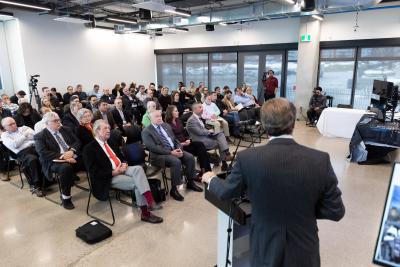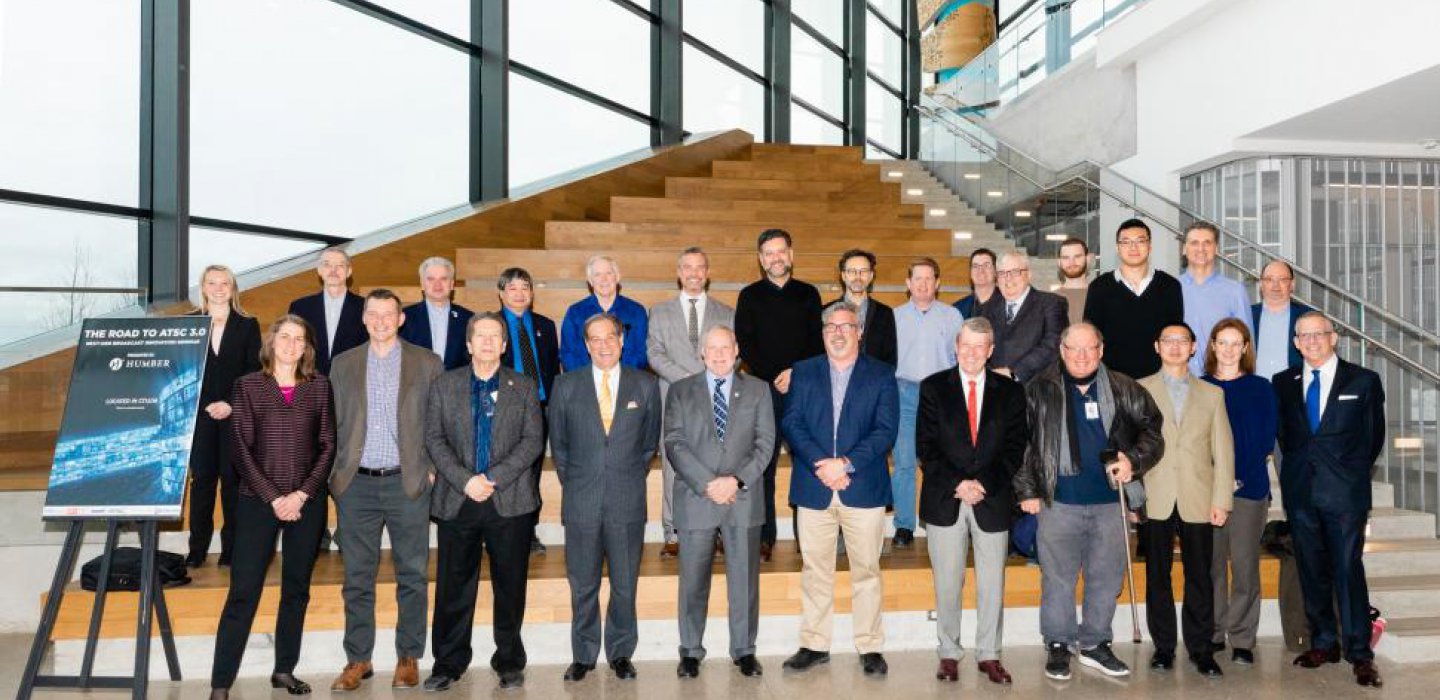Industry experts to learn about how new technology could change everything – data, information and entertainment.
The way you consume your favourite television or online program, get your news or navigate to your destination via GPS could soon be revolutionized.
A group of industry leaders from ISED (Innovation, Science and Economic Development Canada), the CRTC, CTV Bell Media, The Weather Network, Rogers Telecommunications, TVO, and a host of other industry stakeholders, partners, manufacturers and people in the service sector recently met in the Barrett Centre for Technology Innovation to discuss the possibilities.

They were brought together by an interest in ATSC 3.0, which is the next-generation television broadcast standard that will be commercially launched in the U.S. this year. The new TV standard operates as a datacast, opening the door to interactive viewing features for televisions, cell phones and other devices connected using the Internet of Things.
“When I came to Humber, I wanted to…develop innovative platforms for teaching and learning, and to create and lead the way for Canada’s first ATSC Living Lab,” said Orest Sushko, program coordinator for Humber’s Film and Multiplatform Storytelling graduate certificate. “We are thrilled with the opportunity to bring industry partners, faculty and students together into an environment where we could help educate, advocate and advance this standard here in Canada.”
ATSC 3.0 opens the door to many different new uses for broadcast, all of which can be designed and built through today’s web development tools.
This standard offers new business and innovative services in media and creative arts, applied sciences and technology, business, health sciences, social and community services and innovative learning.
“In short, web development can serve the design of online use-cases that can be implemented in the new broadcast/datacast world,” said Sushko. “It’s a convergence of the online (broadband) and broadcast spectrums that houses tremendous potential.”
Research with datacasting includes developing web applications within telemedicine, first-responder services, enhanced emergency alert services, updating GPS in autonomous vehicles, aggregating/updating centralized road signage, wide area software updates for vehicles and devices, addressable advertising, programatic ad exchange, and audience measurement among many others.
“That’s why it is so great that we are here at Humber College’s interdisciplinary campus. If ever there was a technology that has interdisciplinary opportunities, ATSC 3.0 is it,” said Madeleine Noland, president of ATSC. “You can discuss IP data delivery, you can discuss engineering, you can discuss ethics in broadcasting, journalism, communications, big data, it really spans multiple disciplines. My hope is that if Humber was to begin experimenting with ATSC 3.0 and perhaps having a lab for it, that there would a real opportunity for faculty, students and industry to come together from a variety of disciplines to think about the best uses of [it].”
For more information visit www.atsc.org.
